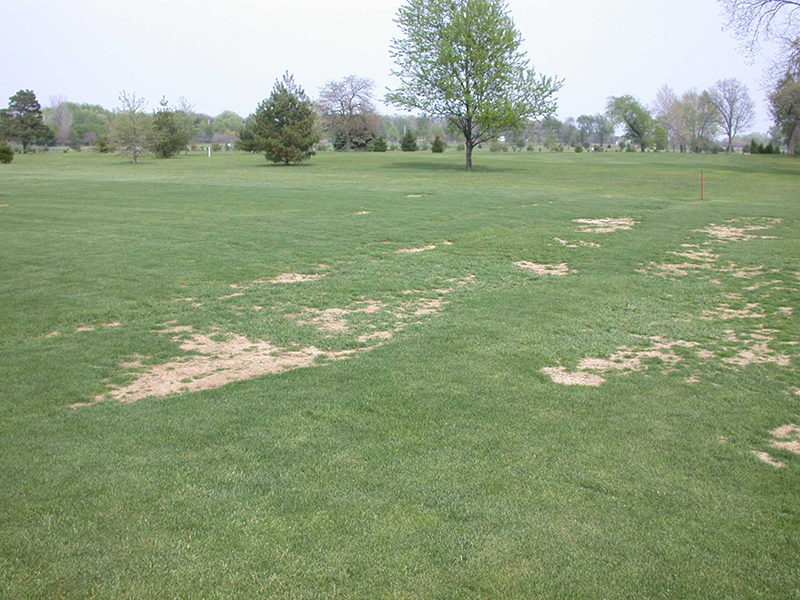Picture of the Week
January 9, 2023
Ice Damaged Turfgrass
Glenn Hardebeck, Turfgrass Research Center Manager, Purdue University, Horticulture and Landscape Architecture
Recent weather conditions across parts of Indiana have created the potential for ice damage to turf areas especially those in low lying, poorly drained areas. Ice damage can come about in two very different ways. Ice cover can have an impact similar to that of flooding. When ice forms over turf, it prevents air circulation in the turf canopy and the soil surface leading anoxic conditions, which in effect smothers the turf. Yet this is not the immediate problem after ice forms since it may require two months or more of ice cover for this type of damage to occur. The other possibility is for turf in low-lying areas to become superhydrated and then suffer a rapid freeze event. This is possible when warm daytime temperatures begin to melt snow followed by a severe drop in temperatures over night or rain changing to ice followed by severe cold. Under these conditions turfgrass plants, especially annual bluegrass, may not be able to adjust to the freezing temperatures quickly enough allowing ice to form inside the plant disrupting cell walls. Widespread damage may require reseeding in the spring.
 Ice damaged annual bluegrass in low-lying areas on a golf course fairway.
Ice damaged annual bluegrass in low-lying areas on a golf course fairway. 
